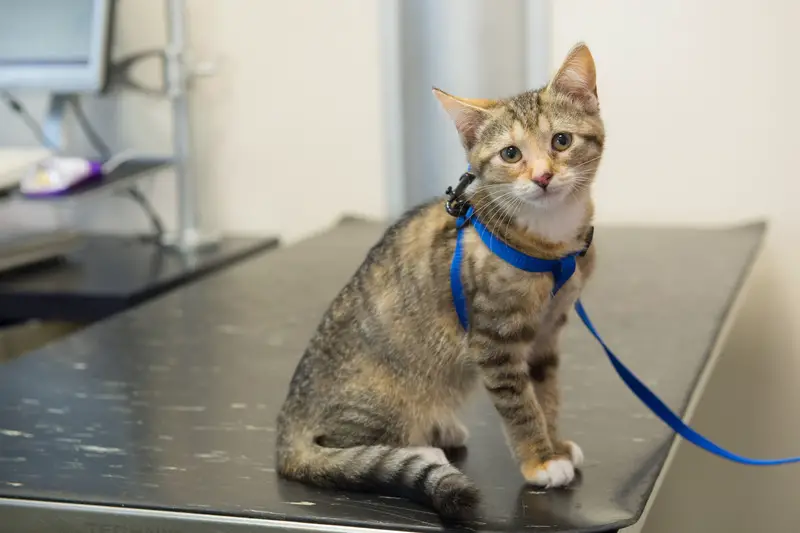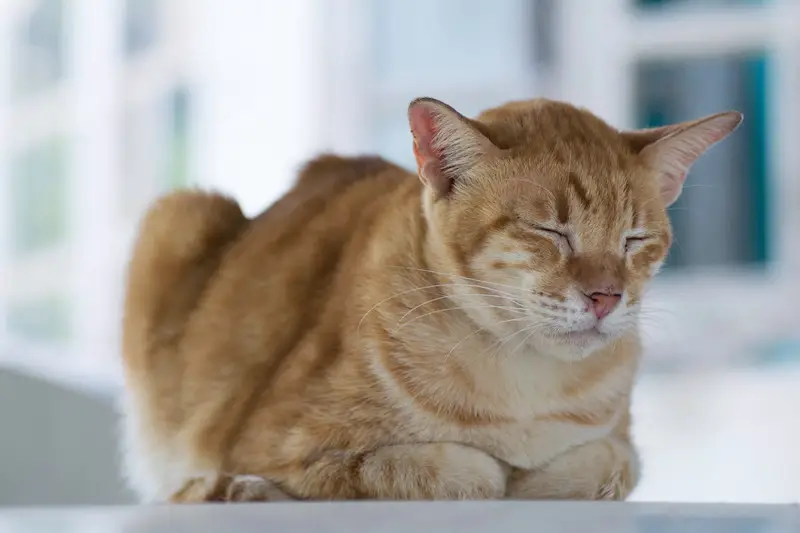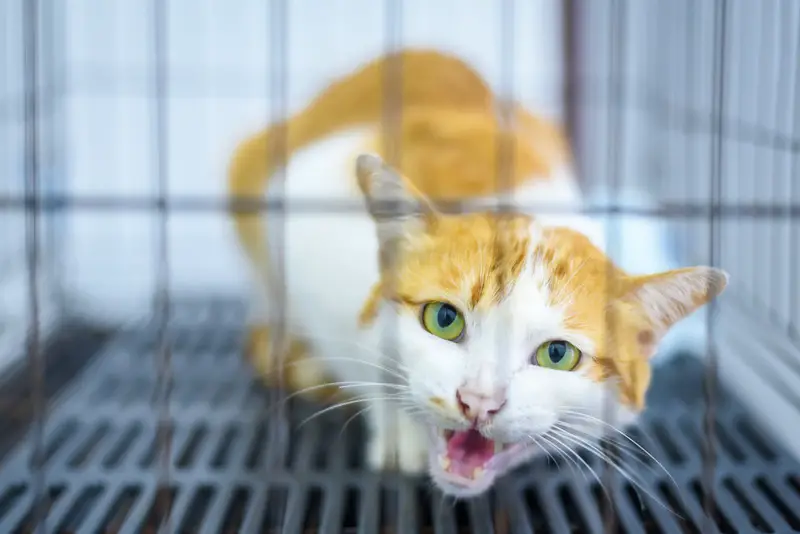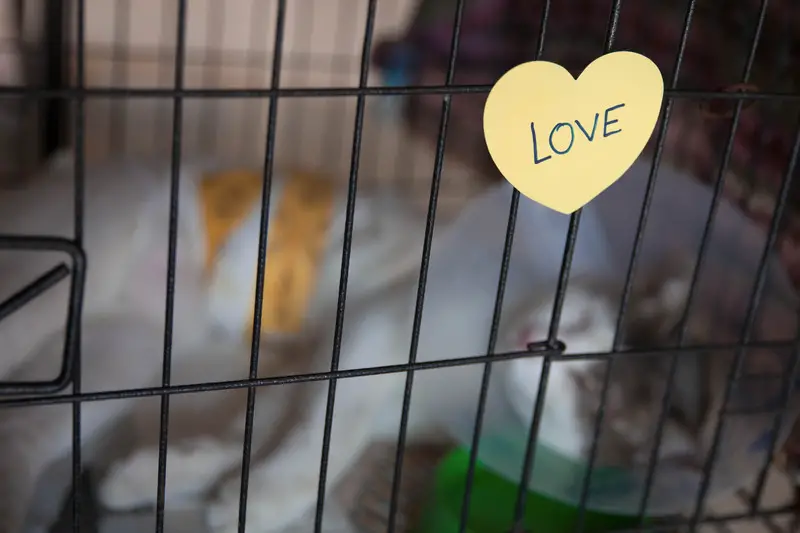What Does It Mean When Your Cat Throws Up Food
Cats get into so many things that it can be tough to know when to be concerned and when to let them be. Hairballs, for one, are quite a normal circumstance, so you may not be alerted right away upon seeing them heaving. However, certain situations may worry you more than others. This is especially true when your cat's vomit takes on unexpected colors, particularly pink.
Cats may throw up pink liquid for a wide variety of reasons. Cats without preexisting health conditions may do this because of irritation or inflammation in the esophagus or mouth. On the other hand, cats with underlying illnesses may be vomiting pink liquid because of parasites or ulcers.
Whether you should worry about your cat if they throw up a pink substance depends on a variety of factors. While some owners should act immediately and take their cats to the vet, others can monitor them at home.
How do you know when to do one versus the other, though?
Continue reading to learn when your cat needs veterinary attention or just a little TLC after vomiting pink fluids.
What Does it Mean When My Cat Vomits Pink Liquid?
When a cat vomits pink liquid, the most probable explanation for the color is that there is blood present in the fluid. The blood has probably shown up in the regurgitated liquid as a result of inflammation of the esophagus. The esophagus can become very irritated by the process of throwing up. So, this issue is not too much of a reason to worry. (Source: Just Answer)
Additionally, your kitty may have accidentally hurt itself when eating or playing. If your cat scraped the inside of its mouth during playtime, the traces of blood might have come from the cheek or tongue. Cats that have experienced trauma to the lungs, however, might also throw up blood.
Still, these are not the only reasons that blood will show up in your cat's throw up. Several factors can cause hematemesis (the act of vomiting blood). If your cat's vomit is initially pink or has pink spots in it, and progresses to have more blood, they should be taken to a vet. (Source: PetMD)
Some of the primary reasons why your kitty may experience blood in their vomit are:
- Ulcers, especially in the digestive system
- Several different types of infections, especially heartworms
- The inability to form proper blood clots (this is known as coagulopathy)
- Traumatic accidents
- Recent surgery
Consider your cat's history to determine their need for a clinical evaluation. Does your fur-baby have any underlying health conditions? Have they recently hurt their mouth during playtime? Could they have just been coughing and irritated their throat?
If you cannot answer any of these questions with 110% confidence, it's time to take your cat to the vet. Furthermore, if you are sure that their pink vomit is related to a preexisting condition, they should surely be taken for a clinical check-up.
What to Do When Your Cat Throws Up Pink Vomit with Grass
While all these causes are certainly possible, you don't have to be alarmed right away. You can remain calm, especially if there are only a few traces of pinkness in the fluid. Cats that have regurgitated grass are no worse off than others. Nibbling on grass is a normal habit for cats.
Further, it is normal for cats to throw up when they eat grass because they do not have the enzymes necessary for breaking down plant material. (Source: PetMD)

Vetoquinol Viralys L-Lysine Supplement for Cats here on Amazon!
Still, for some reason, they enjoy munching on nature's salad. A few reasons why your kitty may be nibbling away at your lawn include:
- Since it causes them to throw up, they may do it on purpose to clear their digestive tract. This helps to get rid of any discomfort from blockages that couldn't otherwise be taken care of.
- Grass contains folic acid. This mineral is essential for supporting a cat's ability to produce hemoglobin. (Hemoglobin is the protein that enables blood to transport oxygen throughout the body.)
- Grass can act as a natural laxative for your cat. If they are feeling a bit backed up, they may just need a bit of help to get their digestive system moving normally again.
Nonetheless, you may be a little worried after your kitty has endured a bit of vomiting, especially if it came out pink. To appropriately care for your cat after it has thrown up a pink substance, follow the instructions below:
- Your primary concern when caring for your cat after it throws up is hydration. Regurgitation is a very draining bodily function. Offer your cat water after vomiting. Warm chicken broth is a good alternative for cats that won't drink water.
- If your cat cannot hold the water down, then you need to visit the veterinarian for IVs.
- Do not feed your cat for the remainder of the day. The next day, feed them a bland diet. A bland breakfast or dinner can be:
- Chicken (cooked, boneless, and skinless)
- Boiled white rice
- Check your cat's mucous membranes. Lift the cat's lip as gently as possible and check the color of the gums. If they are pale or far too dark, go to the vet. Otherwise, there is no need to worry if they are a typical pink color.
- Check your kitty's capillary refill rate. Do this by pressing your thumb on their gums for a few seconds. If the gums regain their color after two seconds or less, this means they are healthy, and there's no need to worry. If it takes more time than that, go to the vet.
- Lastly, check the cat's respiratory rate (how fast or slow they are breathing). Any panting or rapid breathing is a sign that they need to visit the vet.
When Should I Be Concerned About My Cat Vomiting?
Fortunately, the majority of the time that a cat vomits, there is hardly anything to worry about. All you have to worry about is cleaning up the mess. That way, it doesn't make you sick! However, you should be concerned if your furry friend throws up often. If they tend to puke whatever they have recently eaten, then you are right to worry.
You should especially begin to monitor your kitty's health more carefully if your cat has thrown up several times in one week. Do keep in mind, though, that some types of vomiting are normal. For example, it is common for your cat to regurgitate a hairball about once every week or two. This hairball might be accompanied by bile and other stomach fluids, but don't be too alarmed at that.

Purina Tidy Cats LightWeight Glade Extra Strength, Scented here on Amazon!
Note: You should be concerned if your cat does not throw up a hairball now and then. This means the clump is getting caught in the intestines, which can be a life-threatening condition.
There is a long list of reasons why a cat might vomit at any given time. For example, some of the most common diagnoses that Cornell veterinarians issue their patients are as follows:
- Ingestion of poisonous plant material
- Consumption of spoiled cat food
- Eating human food or medication (especially chocolate)
- Ingestion of the materials like yarn or string
(Source: Cornell University)
Some of these diagnoses are more serious than others. On the one hand, you should not be too alarmed if your cat throws up the string they ate during an earlier playtime. On the other hand, your kitty should be evaluated by a veterinarian if you suspect that they have consumed your medication or prohibited foods.
Depending on your cat's history, these may also be serious causes for concern:
- Your cat may have internal parasites.
- If your cat is constipated along with vomiting, there may be a severe issue.
- Cats with inflammatory bowel disease may be more inclined to throw up frequently.
- Cats that have the diseases listed below may experience vomiting more often:
- Kidney disease
- Diabetes
- Hyperthyroidism
If you are concerned with your kitty's health, have them seen by a veterinarian right away. While you do not have to worry about the pink on its own, consider any other possible health conditions. If your cat has a preexisting condition, have them checked immediately. If not, this is a regular occurrence that can be taken care of with a little TLC at home.
In Conclusion
Cats are sneaky little buggers that get into all sorts of things that can either make them vomit or a little sick to their stomach. It's normal to be concerned when they regurgitate such odd colors like pink. Still, this is not always indicative of a severe health problem.
The only time you must be seriously concerned with your cat after it vomits pink liquid is if they have preexisting health conditions, or if your cat is relatively old. Younger cats that do not have a history of issues with their digestive tract, for example, may just be dealing with a scratched throat.
Monitor your cat closely after it vomits and provide water. If symptoms worsen from there or your cat is not responsive to your attention and continues to vomit, then it may be time for an urgent visit to the veterinarian.
What Does It Mean When Your Cat Throws Up Food
Source: https://www.animalshq.com/why-is-my-cat-throwing-up-pink-liquid/





0 Response to "What Does It Mean When Your Cat Throws Up Food"
Post a Comment